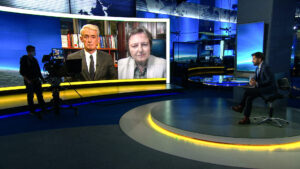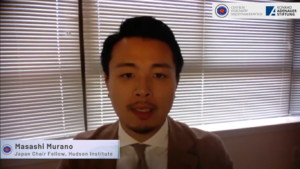
Nuclear arsenal and strategic location make Pakistan a key country in the security architecture of the region as well as an arena of competition between the United States and China. Economic situation hinges much on political events and international problems such as the prolonged conflict with India about Kashmir. Of great importance are also relations with Afghanistan from which the USA and Allied forces have just withdrawn paving the way for its takeover by the Taliban.
Pakistan is a nuclear power with a young, dynamically growing population of about 220 million people. From 1947 on, when the partition of British India into two independent states was agreed according to the religious criterion, Pakistan and the Indian Union have had very poor relations. Both countries accuse each other of hostility and have armed themselves for years. They also acquired nuclear weapons. The tensions have yet increased as a result of the war in the eastern Pakistan and the creation of an independent Bangladesh which was supported by India (1971). According to the estimates by the Stockholm International Peace Research Institute (SIPRI), in 2020, Pakistan spent for defense USD 10.4 billion which makes as much as 4% of the GDP of that country. For comparison, in 2011, its defense spending amounted to 3.3% of GDP while in 2011-2020 had increased by 55%.
Taliban and Afghanistan
The conflict between the West and the Taliban became a serious factor of destabilization in Pakistan. Its government had joined Washington’s “War on Terror” which produced not only millions of refugees but also infiltration of the Taliban movement (in particular in tribal areas) as well as actions of extreme groups – including terrorists – on an unprecedented scale. On the other hand, the pro-West, former President of Afghanistan, as well as the USA and India accused the government in Islamabad and its special services for active collaboration with the Taliban, also during their current offensive in Afghanistan. Islamabad allegedly has been maintaining open supply lines, providing medical assistance to the wounded fighters and sending thousands of armed individuals to Afghanistan to fight government forces.
The authorities in Islamabad blame Americans for chaos in the country as “the military solution” adopted by Washington was unrealistic and counterproductive. In Prime Minister Imran Khan’s view, simultaneously with the abandonment of the military strategy, USA has lost its power of persuasion towards Taliban and thus the tools to negotiate a real political solution. The Taliban movement interprets the deal with Washington and the withdrawal of allied forces as a victory over the West. Pakistan always saw a political settlement between various factions and the participation of Taliban in the government as the only viable – even if extremely difficult – solution for Afghanistan. The worst case scenario for Islamabad is a civil war in Afghanistan with the participation of the Pashtuns from Pakistan who may support their Afghan brethren. Actually these are Pashtuns who feed the Taliban ranks.
Islamabad estimates that the conflict in Afghanistan through its catastrophic impact on Pakistan’s economy cost this country about 150 billion USD. In the human dimension, there have been 70,000 victims, including those who were killed in terrorist attacks. That is why Pakistan favored the involvement of the Taliban in the new Government of Afghanistan, and now opposes any military bases on the Pakistani soil from which the West might be supporting an armed opposition against the “Islamic Emirate of Afghanistan” – as the Taliban call their political project. This approach may make Pakistan a serious player in stabilizing the situation in Afghanistan after the Taliban takeover of Kabul.
Pandemic
Pandemic has had a huge impact on Pakistan’s economy that anyway grew too slowly (an average of 2% according to the estimates of the World Bank) in the last two decades, in order to provide new jobs for about 2 million people who enter the market every year. The measures taken by the government to fight Covid-19 included primarily a lockdown. They and reduction in exports as well as lower inflow of remittances from Pakistanis working abroad led inevitably to a reduction in economic activity in the country. World Bank estimates that in the financial year 2020 all those factors had made GDP shrinking by 1.5%. However, already before the pandemic – in 2019 – Pakistan’s GDP growth slowed down to 3.3% from 5.7% in 2018.
Due to the prolonged difficult economic situation and attempts to introduce reforms, Pakistan concluded an agreement with the IMF for a loan of USD 6 billion in July 2019. However, it was conditioned by a “decisive fiscal consolidation”, increasing the efficiency of tax collection and finding additional sources of revenues. The pandemic has significantly hindered the implementation of the arrangements, so the government has been trying to negotiate a relaxation of conditions by the IMF. At the turn of 2020 and 2021, there were some signs of economic recovery, e.g. an increase in industrial production by 14% between July 2020 – May 2021, as well as record remittances which amounted to USD 29.4 billion. The problems, however, have not disappeared. Among them is a galloping inflation and a foreign trade deficit of USD 30 billion. In addition, the current account deficit reached USD 632 million on a monthly basis (data for July 2021).
Relations with the European Union
The European Union is Pakistan’s second largest trading partner. In 2020, the EU accounted for 14.3% of the country’s total trade and 28% of Pakistani exports. Economic relations between the European Union and Pakistan are defined by the Cooperation Agreement, concluded in April 2004. However, the “Strategic Engagement Plan” (SEP), adopted in June 2019, became the essential document for the partnership of both parties in various areas. It established a “Security Dialogue” covering counter-terrorism, non-proliferation and disarmament. Within the SEP, Pakistan and the EU also agreed to work together to promote “democracy, the rule of law, good governance and human rights”. However, SEP does not create legal obligations for the parties under national or international law. On the other hand, the document included also the containment of illegal migration and cooperation in the field of readmission – issues of particular importance to Brussels. It is worth noticing that since the US intervention in Afghanistan in 2001, Pakistan itself has become home for three million refugees.
In terms of trade, Pakistan benefits from the so-called Generalized System of Preferences (GSP+). It is a special “incentive arrangement” introduced by the EU for low-income countries, provided that 27 international conventions on human rights, labor rights, environmental protection, sustainable development and good governance are effectively implemented. GSP+ grants Pakistan a zero duty rate on two-thirds of all product categories exported to EU countries. This system is extremely important for Pakistan, given that about 78% of Pakistani exports enter the EU at preferential rates. This is the case for around 80% of textiles and clothing, and these goods represent more than 80% of Pakistan’s exports to the EU. As a result, Pakistan’s exports to the EU have increased by over 47.25% since 2013, and the export of textiles – by as much as 66.6%.
At the same time, on April 29, 2021, the European Parliament issued a resolution in which “calls on the Commission and the European External Action Service (EEAS) to immediately review Pakistan’s eligibility for GSP+ status” due to human rights violations – among other things.
Relations with China
The roots of Pakistan’s good relations with China go back to 1963 and the border agreement between the two countries on the part of Kashmir administered by Islamabad. In terms of economic cooperation, a breakthrough came with the launch by Beijing of the Belt and Road Initiative (BRI) in 2013 – the flagship project of the Chinese leader – Xi Jinping. In 2015, BRI’s extension became the so-called CPEC or the China-Pakistan Economic Corridor.
The project covers the construction of infrastructure (a network of roads, railways and pipelines), exploitation of ore mines, and the creation of special economic zones. The value of investments under CPEC declared by Beijing is USD 60 billion. One of the key elements is the strategically located port of Gwadar on the Arabian Sea which links this region to the northwestern province of China – Xinjiang, which is to facilitate the transportation of resources from the Persian Gulf countries to the Middle Kingdom. For the region, the investment is to bring development, modernization and much needed jobs under the “Gwadar Smart Port City Master Plan“. However, the project itself also met with resistance.
Gwadar is located in the Balochistan province, where the local separatist movement “Baluchistan Liberation Army” operates which targets not only Pakistanis but also the Chinese. Consequently, in order to protect CPEC, the Government of Pakistan established a “Special Security Division” (SSD) in 2017, made up of nine military battalions and six civilian units, totaling 13,700 people. The agreement on two other key Chinese projects in Pakistan was concluded during the pandemic – in June 2020, and is estimated to be worth USD 11 billion. These are two hydroelectric plants in Islamabad-administered Kashmir, and the modernization of railroads in Pakistan.
The CPEC has also become a new front for rivalry between the US and China. Washington criticizes Chinese investments in Pakistan, as well as the entire BRI, claiming that “CPEC relies mainly on Chinese workers and supplies, even in the face of rising unemployment in Pakistan.”
Pakistan at a strategic crossroads
The lightning speed at which the Taliban captured the neighboring Afghanistan puts Islamabad in a new strategic position. On the one hand, it potentially strengthens its influence in the region, but on the other, it may lead to instability in Pakistan itself. The already powerful radical religious movements will gain in strength as they strive to establish in Pakistan a socio-political system similar to the one envisioned by the “Islamic Emirate of Afghanistan”. Millions of refugees trying to enter Pakistan will complicate the already difficult economic situation of the country. Islamabad is trying to balance its budget with loans from the International Monetary Fund (IMF) and aid packages from Beijing and Saudi Arabia. However, the only solution for Pakistan are serious structural reforms, both in the economic and fiscal spheres, as well as making the State more effective which is conditioned by a real fight against corruption. The current security situation of the country and the social conditions of its population, are not conducive to launching necessary long-term reforms of the State and its institutions. Most likely, therefore, little will change in Pakistan in the coming years in terms of economic governance, military dominance, and how the institutions work. Further stagnation is a realistic scenario.
Author: Bruno Surdel, PhD, analyst, Centre for International Relations
[evc_interactive_banner type=”classic” custom_link=”url:https%3A%2F%2Fmastersandrobots.tech%2F|||”]




